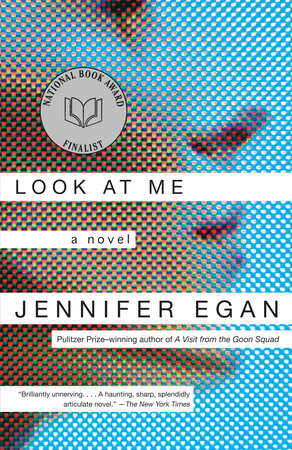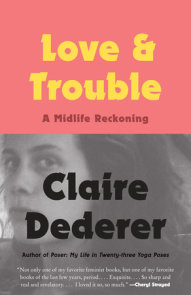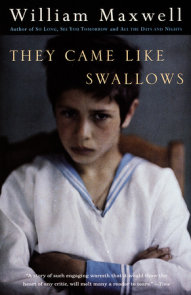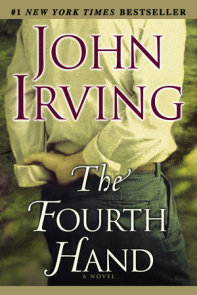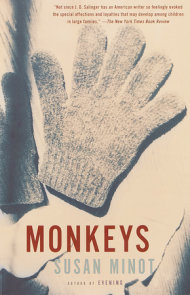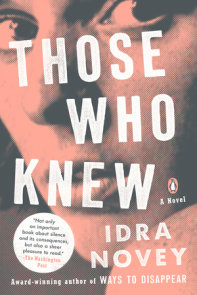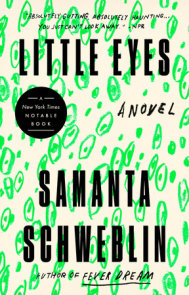READERS GUIDE
NATIONAL BOOK AWARD FINALIST"A haunting, sharp, splendidly articulate novel." —THE NEW YORK TIMES
The introduction, discussion questions, suggested reading list, and author biography that follow are intended to enhance your group’s discussion of Look at Me, a coolly mesmerizing intellectual thriller that traces the aftereffects of a devastating car accident on one model’s career.
Introduction
Questions of identity in an age marked by a preoccupation with appearances permeate Look at Me, which takes place in a time in which the most frightful aspects of the virtual revolution have entirely derailed age-old notions of self and identity. Egan’s horrifying look at a world in which commercial viability far outweighs humanitarian concerns is punctuated by fleeting, almost wistful glimpses of people who are far enough removed from the epicenter of the information age that they have escaped, at least for now, its ravages. There is young Charlotte, daughter of Charlotte Swenson’s girlhood friend, who traverses the rural landscape of her Midwestern town with a steamy sexuality untouched by time. There is Moose, the erstwhile football hero whose glory days have slipped away, leaving him obsessed with a mysterious vision of the historical, industrial age, an age of purity and hope that somehow gave rise to today’s technological excess. And there is the enigmatic Michael West, who repeatedly exchanges one way of life for another in an endless quest for what he believes is revenge, but in fact is something else.Have you ever wondered what might become of your essential self if the surface were torn away? Have you pondered the difference between the face you present to the world and the reality you carry inside? Jennifer Egan’s multifaceted portrait of a fashion model who finds herself suddenly confronting such questions invites us to evaluate our most deeply held notions of identity and challenges us to examine the price we pay for the furious pace of modern life.
Questions and Topics for Discussion
1. “I was not Rockford—I was its opposite, whatever that might be,” Charlotte declares. In Charlotte’s mind, what does Rockford represent? How is her chosen path a reaction to her place of birth? Is her return to Rockford at the end of the book merely circumstantial, or does it represent a symbolic shift in her perception of her hometown?
2. Charlotte describes her notion of the shadow self as, “that caricature that clings to each of us, revealing itself in odd moments when we laugh or fall still, staring brazenly from certain bad photographs.” Why does this concept interest Charlotte, and what does that reveal about her character? What do you imagine Charlotte’s shadow self looks like? Does it change after her accident?
3. Many of the characters in Look at Me undergo major transformations—whether during the course of the novel or before it begins. In what specific ways do the characters change, and how do these changes affect their lives? Which transformations do you find most surprising? How is the idea of transformation linked to the novel’s larger thematic concerns about identity and self?
4. Discuss Z/Michael West. For what is he searching, and what does he find? How does his personal journey mirror Charlotte Swenson’s?
5. While recuperating from her accident and subsequent surgery, Charlotte allows none of her friends or acquaintances to see her. Once people see you in a weakened state, she claims, they’ll never forget, “and long after you’ve regained your vitality, after you yourself have forgotten these exhibits of your weakness, they’ll look at you and still see them.” How does this statement reflect Charlotte’s worldview at the beginning of the book? Is she right? Is her perspective borne out over the course of the novel, or does it evolve?
6. Misperceptions and misunderstandings play a crucial role in the plot of Look at Me; characters often reach for something they believe they see in one another, only to find that they were mistaken, or even purposely deceived. Identify some of these misunderstandings and talk about their significance to the novel as a whole.
7. Charlotte says, “information was not a thing—it was colorless, odorless, shapeless, and therefore indestructible. There was no way to retrieve or void it, no way to halt its proliferation.” Compare this statement to Moose’s idea that “now the world’s blindness came from too much sight, appearances disjoined from anything real, afloat upon nothing, in the service of nothing, cut off from every source of blood and life.” What is the connection between these two statements? Do they present differing views of the world or simply different interpretations of the same problem? In the end, does Look at Me seem to sanction them or call them into question?
8. Despite his apparent instability, there is a peculiar beauty in Moose’s striving for vision and in his efforts to communicate that vision to the young Charlotte. For what is he looking? Define, if you can, his odd emotional and spiritual response to industrial and historical events. When Moose experiences his vision once again at the end of the novel, what exactly do you think he sees?
9. Discuss Charlotte’s relationship with Irene Maitlock. What is it about Irene that draws Charlotte to her? Do you see any connection between this relationship and Charlotte’s friendship with Ellen Metcalf? How does Charlotte and Irene’s relationship change over the course of the book?
10. All of the characters in Egan’s novel deal differently with the concept of memory: Michael West allows himself just one memory a day, Charlotte shuns her memories, and Moose exists in a world saturated by memories of his own life, along with imagined recollections of an earlier historical time. What connection does the novel suggest between personal memory and cultural memory? How do you suppose the young Charlotte might feel about her memories twenty years down the road?
11. Look at Me begins by recounting Charlotte Swenson and Ellen Metcalf’s girlhood sexual misadventures. At the end of the novel, Charlotte and Ellen meet again, in very different circumstances. Talk about both women’s experiences in the interim, and about the significance of their last meeting. Did it satisfy you?
12. At the end of the novel, Charlotte demurs, “As for myself, I’d rather not say very much.” Indeed, the novel seems intentionally to leave us without a clear sense of what the future holds for its characters. Why do you think Egan has chosen to end her book so ambiguously? What sorts of lives will the Charlottes, Ellen Metcalf/Hauser, Z, Moose, Ricky, and Irene Maitlock go on to live?
13. Do you feel that Look at Me, with its depiction of how behind-the-scenes events contribute in the making of public images, will have any impact on the way you perceive celebrities?
14. Do you consider Look at Me—in particular, its brutal portrayal of the modeling world—a futuristic novel? Or can it be read it as a fairly accurate look at our present, evolving world? Might there be some way of escaping some of the disturbing scenes Egan describes?
About this Author
Jennifer Egan is the author of the novels Look at Me and The Invisible Circus (which was released as a movie starring Cameron Diaz and Jordana Brewster), and a collection of stories, Emerald City.Born in Chicago and raised in San Francisco, Egan attended the University of Pennsylvania and St. John’s College, Cambridge. Her fiction has appeared in such publications as The New Yorker, Harper’s, GQ, and Ploughshares, and she is a frequent contributor to The New York Times Magazine. She lives in Brooklyn with her husband and son.
From the Hardcover edition.







